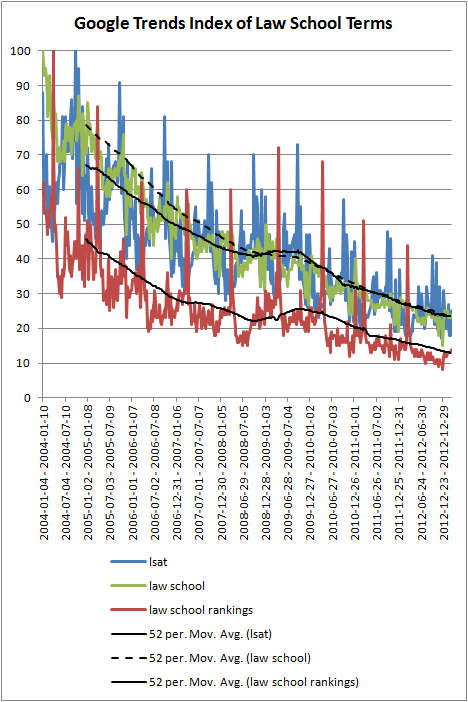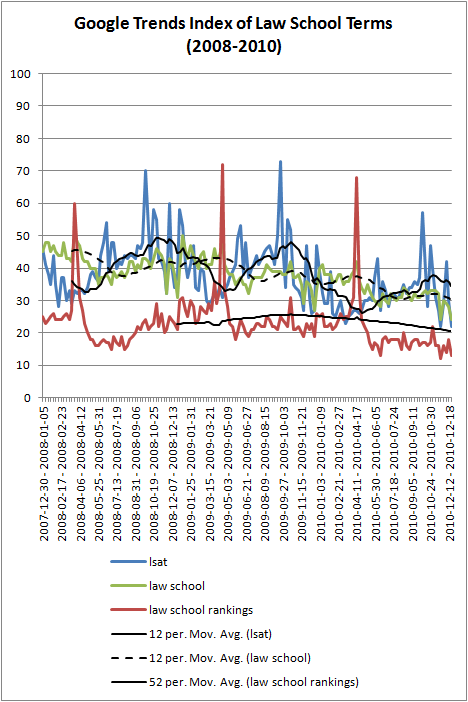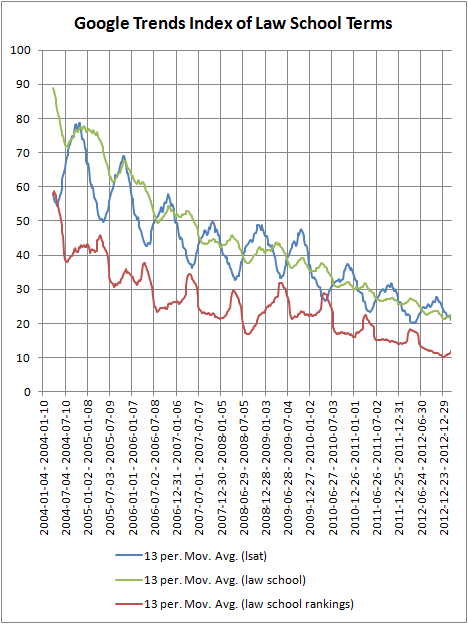…Which should not surprise anyone. If anything, the real news will be when the LSAC publishes the number of first-time takers over the last few years. I’m willing to bet that the number is even lower now than twelve years ago.
But here is the post-mortem.

(Source)
The only question is why it took me so long to realize that the 4-testing period moving sum was a more useful measurement than the 4-period moving average. Personally, I’m a little surprised that the moving sum didn’t reach a near-record low the way the number of applicants has, but then again, after the June LSAT I was saying that the number was plateauing.
Speaking of applicants, the LSAC has updated its applicant and application counts.

 Again, no new surprises, and we shouldn’t expect any for the rest of the cycle, but these 54,000-56,000 or so applicants are much less likely to be the kind of post-college-aged folk whom law schools once thrived upon. I’m further willing to bet that the share of applicants to full-time programs is at a super low, and only a minority—an important minority, mind you—will be paying full tuition.
Again, no new surprises, and we shouldn’t expect any for the rest of the cycle, but these 54,000-56,000 or so applicants are much less likely to be the kind of post-college-aged folk whom law schools once thrived upon. I’m further willing to bet that the share of applicants to full-time programs is at a super low, and only a minority—an important minority, mind you—will be paying full tuition.



